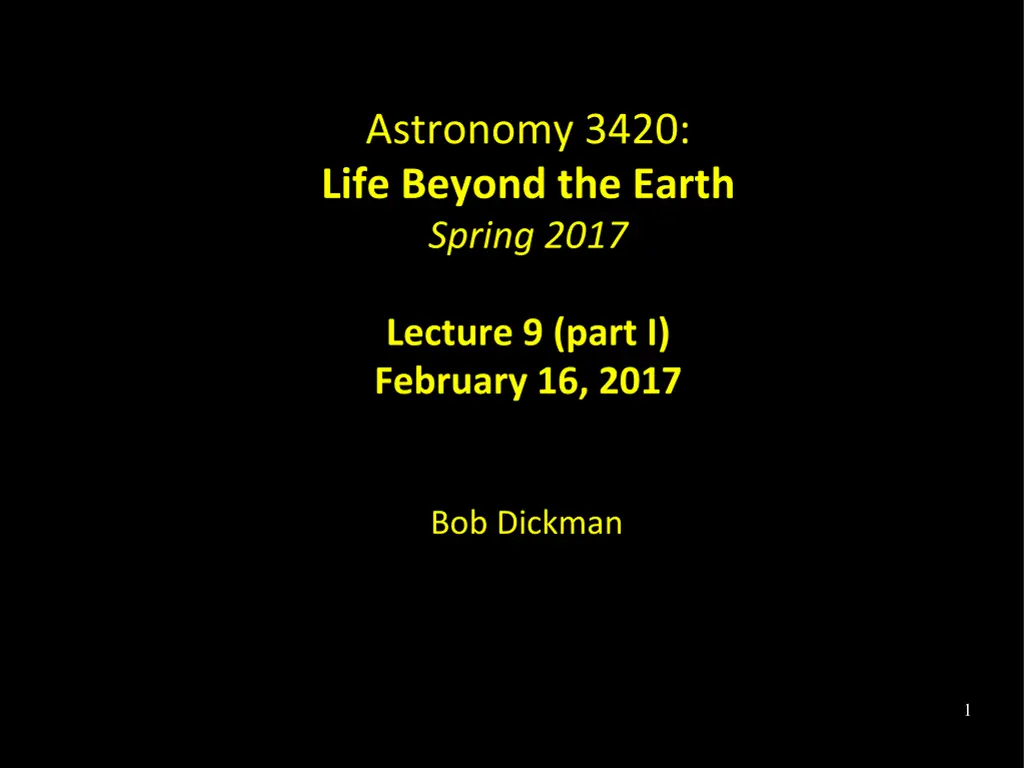
Unveiling the Formation of Our Solar System and Interstellar Dust
Discover the intriguing role of interstellar dust in the formation of our solar system, as explained through the Nebular Hypothesis. Explore the mysteries of Giant Molecular Clouds, Orion Nebula, and Taurus Molecular Cloud, shedding light on the birth of stars in interstellar gas clouds.
Download Presentation

Please find below an Image/Link to download the presentation.
The content on the website is provided AS IS for your information and personal use only. It may not be sold, licensed, or shared on other websites without obtaining consent from the author. If you encounter any issues during the download, it is possible that the publisher has removed the file from their server.
You are allowed to download the files provided on this website for personal or commercial use, subject to the condition that they are used lawfully. All files are the property of their respective owners.
The content on the website is provided AS IS for your information and personal use only. It may not be sold, licensed, or shared on other websites without obtaining consent from the author.
E N D
Presentation Transcript
Astronomy 3420: Life Beyond the Earth Spring 2017 Lecture 9 (part I) February 16, 2017 Bob Dickman 1
Lecture 9 Additional Information on the Formation of the Solar System (modified/new slides have a in upper left corner) Clarify role of dust in planet formation Begin: Geology and the Formation of a Living World
Week of 2-14-17 Homework 3 posted; due next Thursday at start of exam Reading: All of Chapter 4 done by Tuesday 2-21-17 (it will be on the test) If you are interested, I have posted a brief set of slides on the Collab site under the resources tab. Subject: The Forces of Nature
Interstellar Dust in the Milky Way Galaxy: An Interstellar Dark Cloud About 1% of a typical interstellar cloud in our galaxy is made up of interstellar dust grains, composed mainly of carbon, silicon, and oxygen compounds. Where there is dust, there is also gas. Think of something like a very fine, grainy soot These cause the parts of interstellar clouds without very massive, hot stars to appear dark by blocking the light of background stars Above: Dust grains in the cloud Barnard 68 block the light of the stars behind the cloud (left) Remember the interstellar gas (mostly H2 and He) is transparent to starlight Using infrared sensors (right), you can see the obscured stars shining through the dust
Stars Form in Interstellar Gas Clouds Stars form from dense interstellar clouds made of gas and dust The hydrogen in these clouds is molecular in form (H2), rather than atomic form the Orion Nebula The most massive and largest molecular clouds are called (wait for it) Giant Molecular Clouds (GMCs) When a GMC give rise to the most massive types of stars, you get an area of ionization around the stellar nursery. This can be very colorful, as on the left The Great Nebula in Orion
The Nearby Taurus Molecular Cloud: No Current Massive Star Formation Here Dust in this cloud obscures the background stars
Origin of the Solar System: The Nebular Hypothesis (I) Dense areas of gas and dust in a GMC , sometimes light years in size, begin to collapse under their own gravity This is a complex process, with several poorly-understood external and internal triggers. Large areas undergoing collapse will tend to fragment into smaller clumps, each continuing to collapse separately In each collapsing region, the gas and dust rotate faster (because of angular momentum conservation) and heat up because of friction. Initially, the gas radiates this heat energy very quickly, but eventually, the collapsing cloud begins to heat up. The structure becomes a flattened protoplanetary disk. Why? Notice that the gas in the disk has to shed angular momentum before it can move inward. Gas falling inward from above the plane of the disk has much less angular momentum to get rid of (you can think of this as less centrifugal force against falling inward), so gas collapsing perpendicular to the disk falls inward much faster than the gas in the disk. The spinning regions flatten, and form an accretion disk. Gas friction in the accretion disk heats the entire disk when the density gets high enough, with the central regions of the disk being the hottest, and the temperature declining with distance from the center
Origin of the Solar System: The Nebular Hypothesis (II) Gas flows through the disk toward the central density condensation, which continues to accrete inflowing gas. The condensation a protostar continues to collapse and increase in mass; in some cases, if conditions are right, the protostellar condensation splits into two or more collapsing clumps, and the result will eventually be a close binary or multiple star. When protostellar cores get hot enough to ignite nuclear reactions, the new stars begin to stabilize their masses. Energy from the newborn stars enhances the temperature gradient in the disk (hot in center, getting cooler the farther out you go) even further In the denser parts of the disk, the dust grains that have collapsed with the interstellar gas are colliding with other dust grains. Small grains with the right collision geometries can stick together. This aggregation or accretion process within the disk begins to form small rocks, which grow into larger bodies, eventually producing planetesimals , which eventually coalesce to produce planets Through this process terrestrial planets emerge from the dust and gas in the disk.
Origin of the Solar System: The Nebular Hypothesis (III) History: This picture was first proposed by the philosopher and polymath Emanuel Swedenborg in 1734, and considerably refined by philosopher Immanuel Kant in 1755. It was long on description, but short on physical detail. That has changed over more than 250 years. Though often called the Nebular Hypothesis, this picture is fact, not hypothesis. Parent suns and their planets form from the gravitational collapse of an interstellar molecular gas cloud. However, many details still remain to be clarified.
Remember: Gravity Builds Stars Accretion Builds Planets Recall that, on average, the universe is 99% hydrogen and helium, and only ~1% of other stuff in GMCs forming stars in the Milky Way galaxy Planetary initially growth involves only the rare 1%
Why only the Rare 1%??? Accretion is the sticking together of solid particles This is what makes planets The solid particles here are small particles of things like metal, rock, and ices, primarily made of the 1%. These seeds of planets were present as the dust mixed in with the gas of the parent Giant Molecular Cloud NOTE: Hydrogen and helium remain gaseous, and thus do not form solid particles Real microscopic interplanetary grains Artist s concept
The Jovian/Terrestrial Distinction Planets accrete from the solid particles in the protoplanetary disk; the formation of terrestrial planets in the inner disk by accretion of metals and rocks is limited by the availability of these solid materials The local temperature in the disk determines what types of particles can survive in solid form and temperatures in the disk are governed by how far you are from the new- born Sun At the outer edge of the warm inner disk, where temperatures drop below the freezing point of water called the snow or ice line water ice as well as ammonia and methane ice particles are able to grow and aggregate. This means that more than twice as much aggregating material is available to form planetesimals beyond the ice line. And it does. Much lower!
Thermal and Particle Structure of A Protoplanetary Disk with (proto)stellar Core
The Jovian/Terrestrial Distinction So this picture is consistent with finding rocky worlds and moons close to the Sun, and more icy ones -- moons, in particular -- farther away Earth's Moon (mostly rock) Saturn's Moon Dione (mostly ice)
So Why Are The Giant Planets Gas Balls ? Gas cannot participate directly in the accretion process: atoms and/or molecules don t collide and stick together spontaneously (look at the air in this room!) However, if a forming planet grows large enough, its gravity can become strong enough to collect the hydrogen and helium gas directly in the outer protoplanetary disk. These gases are far more abundant than the dust. Thus, far enough out from the new-born Sun, rock and ices accrete into protoplanetary planetesimal that grow large enough to gravitationally attract large amounts of gas. The additional mass produced by the ices is what is needed to get the protoplanet past the threshold for gathering gas. This accounts for the basic inside/outside (Terrestrial/Jovian) structure of the Solar System It also predicts the presence of rocky cores in Jovian planets






















